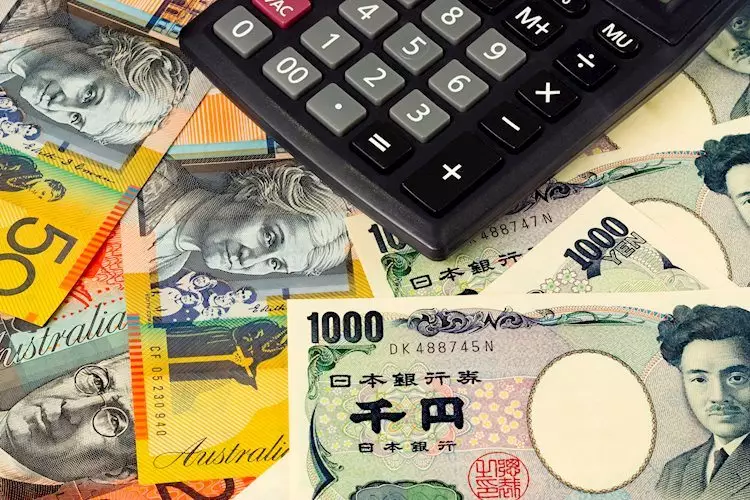The AUD/JPY cross has gained momentum near 97.55 during the Asian session, marking a 0.36% increase for the day. One of the contributing factors to this uptrend is the positive Chinese economic data released. In July, Chinese Retail Sales rose by 2.7% year-over-year, surpassing market expectations and providing support to the Australian Dollar. However, the Chinese economy remains fragile as recent stimulus measures only had a minimal impact on private spending. This vulnerability could potentially weigh on the AUD in the near future, given China’s status as Australia’s major trading partner.
Another significant factor influencing the AUD/JPY pair is the uncertainty surrounding the Reserve Bank of Australia’s (RBA) interest rate decisions. The recent increase in Australia’s Unemployment Rate to 4.2% in July has prompted speculation of a 25 basis points rate cut by the RBA in its final meeting of the year in December. Market participants are already pricing in this possibility, which could impact the value of the Australian Dollar moving forward.
On the Japanese Yen front, uncertainty over the timeline of the Bank of Japan’s (BoJ) rate hike is exerting downward pressure on the currency. Japanese Economy Minister Yoshitaka Shindo’s statement about working closely with the BoJ for flexible macroeconomic policy management adds to the speculation. BoJ Governor Kazuo Ueda’s assurance of potential rate hikes based on economic and price outlook further contributes to the uncertainty surrounding the Japanese Yen.
Several key factors impact the value of the Australian Dollar, with interest rates set by the RBA being a primary driver. The RBA’s goal of maintaining stable inflation by adjusting interest rates plays a crucial role in determining the AUD’s value. Additionally, the health of the Chinese economy, inflation rate in Australia, growth rate, trade balance, and market sentiment also influence the AUD positively or negatively based on prevailing conditions.
As Australia’s largest trading partner, China’s economic health directly impacts the value of the Australian Dollar. Positive performance in the Chinese economy leads to increased demand for Australian exports, bolstering the AUD. Conversely, any slowdown in Chinese growth can have adverse effects on the Australian Dollar. Therefore, Chinese economic data releases can cause significant fluctuations in the AUD/JPY currency pair.
Iron Ore serves as Australia’s primary export commodity, with China being the largest importer. Fluctuations in Iron Ore prices directly impact the Australian Dollar, with higher prices boosting the currency’s value due to increased demand. Additionally, higher Iron Ore prices often lead to a positive trade balance for Australia, further strengthening the AUD. The trade balance, which reflects the difference between exports and imports, plays a crucial role in determining the AUD’s value based on surplus or deficit conditions.
Overall, the AUD/JPY currency pair is influenced by a complex interplay of economic indicators, central bank decisions, trade dynamics, and market sentiment. Understanding these key factors is essential for traders and investors looking to navigate the intricacies of the AUD/JPY exchange rate.

